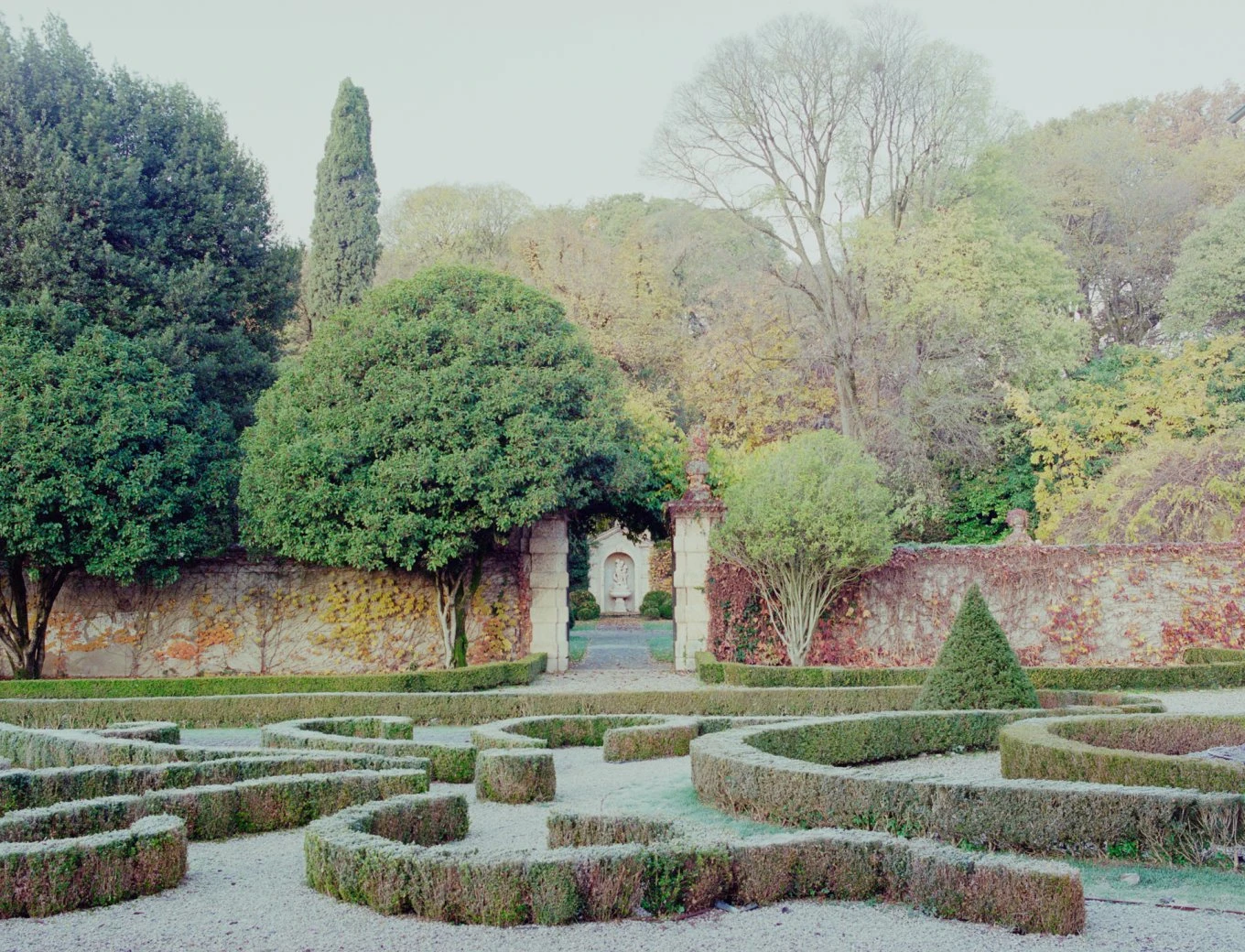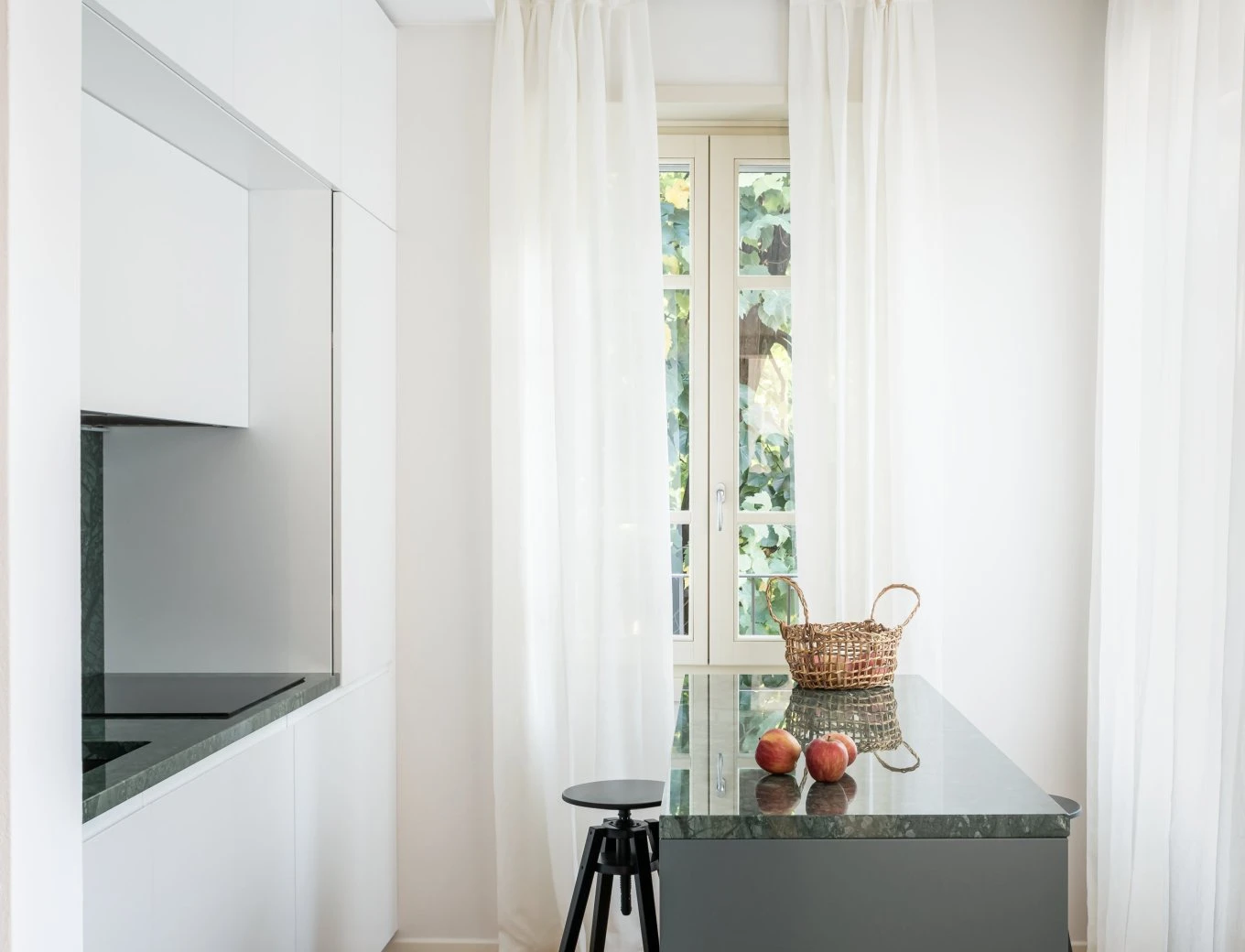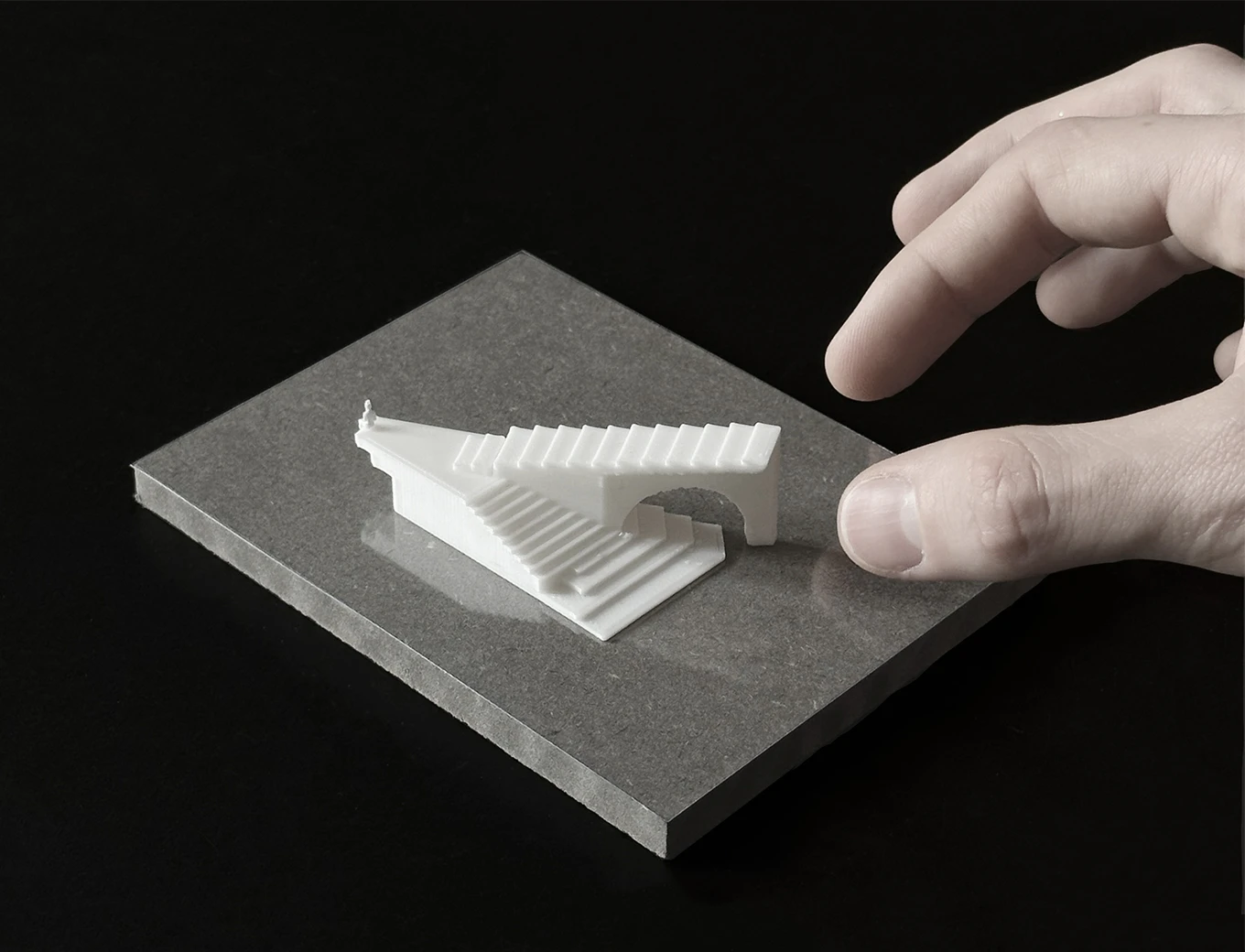Italy: The New Domestic Landscape
New York 1972 / Venice 2020
In 1972, a historic MoMA exhibition launched Italian design globally with "Italy: The New Domestic Landscape." Forty-eight years later, Chiara Carrera and Giovanni Svalduz reimagine the show, supported by MoMA's Paola Antonelli and Emilio Ambasz. The project involves fifty Italian architects, designers, and photographers under 35. Daktýlios is one of forty-three selected projects, presented through photos, videos, models, and installations.

The project responds to the necessity of increasing toilet facilities for the guests in the exquisite historical Renaissance Villa Brenzoni-Guarienti in Garda, built in the 16th century by the will of Agostino Brenzoni and considered one of the awe-inspiring examples of nobiliar manors of the area.

The project consists in the extension of the residence for a musicians' family. The original building is located in an hystorical town close to Garda Lake, placed between the boundary of the village and the surrounding vineyards. This new volume is designed to fit in an old private courtyard, directly connected to the garden.

During the "Mantova Architecture Festival", a temporary installation reactivates an abandoned space placed into a deconsecrated church of the XV century.

A piece of wooden furniture redefines a 35 sqm apartment located on the hills near Lake Garda, based on the need to maximize space and obtain a permanent corner for the sleeping area.

A single element redefines the main spaces of the house, through a unique element that connects the entrance at the ground floor with the living area at the first floor.

The design proposal for the re-qualification of Piazza Fernando di Savoia, a neglected open area entirely used for parking, located in the municipality of Peschiera del Garda (Province of Verona) received first prize amongst a total of 153 proposals in a competition announced in 2011.

The surrounding landscape becomes an opportunity to define the shape and organization of this single-family house placed on a little hill, surrounded by vineyards, close to Garda Lake and Frassino Natural Reserve.

"DAT La Colombara of Montorio" barracks is located in the countryside of Verona 5 kilometers from the historic center. For its strategic position, in 1944, during the 2nd World War, it was occupied and used as a place of detention for Jewish internees awaiting transfer to other destinations. The design consists of addictions of wooden "boxes" inside the existing building, which will support the new roof and at the same time will create new spaces. In this way, the existing walls will be preserved and enhanced as evidence of the building's experience.

The restoration and enhancement project of the historic park of Villa Maffei Sigurtà focused on the vegetation elements and the reorganization of spaces and landscape views through the introduction of a few architectural interventions.

The project involves refurbishing an apartment in Brescia, focusing on elegant living spaces and quality materials. Key features include a Guatemala Green marble kitchen island, serving as a centerpiece, and a green lacquered wooden partition wall that harmoniously separates the living and utility areas while complementing the natural tones of the design.

The request to design the interiors of this summer retreat for a family of musicians provided an opportunity to incorporate the surrounding landscape of lake, mountains, and village through the choice of colors and materials.

The Adige river is a key feature in the development of Verona, but its relationship with the city has shifted to a primarily visual one, with the river no longer central to activities and development. Access between the river and the city is mainly through stairways that are now largely unused. TThe project aims to revitalize these stairways, transforming them into recreational areas, public spaces, and event venues, thereby emphasizing the significance of this vast and underutilized area.


